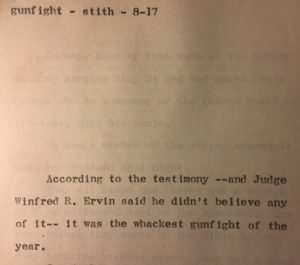If you knew what a “slug” was you would know what a foolish mistake I had made.
In the old days, reporters named their stories –slugged them — so everyone could keep up with them while they was being edited and set in type. Editors laying out the paper would diagram where each story was supposed to go and write the slug in that space.

Each page of a story –newspaper people called a page a “take” — was slugged. The first take about, say, a fatal traffic accident might be slugged “twodead-1,” the second take, “twodead-2” and so forth.
Why?
Stories that came in late would be set in type by several linotype operators, each one working on a different take. The story could be set in type faster that way. Reassembling a story wasn’t a problem because each take was slugged, showing the printer which blocks of type went together and in what order.
The printer, of course, would remove the slug lines and throw them into what they called the “hellbox.” At least, he was supposed to.
I wrote right many embarrassing stories about government misadventures and the officials who were responsible. The main character of the story in question was a bad fellow, an SOB, so I slugged the story “SOB-1; SOB-2; SOB-3” and so forth.
You’ve guessed what happened, haven’t you.
The printer failed to pulled one of the slugs, on the third take, “SOB-3,” and that slug appeared in the paper. Right in the middle of the story there it was, “SOB-3.”
Postscript: That was the last time I ever wrote a prejudicial comment about one of my stories, something that could have been used against me in court. Never again, not in a slug, not in the margin of my copy, not in my notes, and, later on, not in an email — nowhere, no how, no way. I had learned my lesson.
Coming Monday: Ring THAT Up
